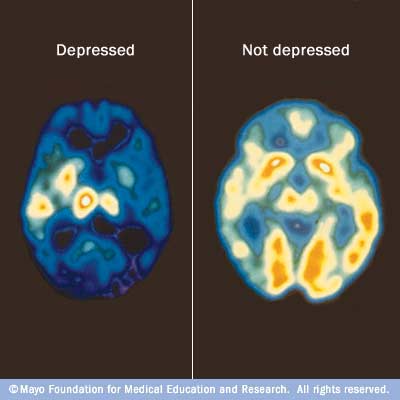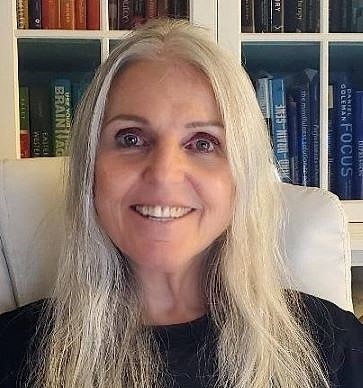Upping Life Satisfaction Now
Be choosy, it’s your life! As the new year begins you’ll probably be making a change or two intentionally. Here’s an easy technique or approach you can do to feel more satisfied and be effective in making changes to up level your life.
Keeping in mind that there are only 168 total hours in a week, 7 days, how you chose to spend your discretionary time is a big deal. So much of the time is spent sleeping, working, taking care of yourself and others, your home and responsibilities life entails, there isn’t much left over for you to fill from your heart’s desire, if any some days, some months, some years.
How much better could your life feel overall if the have-tos didn’t feel like burdens and therefore left you with more me time, free-time and needed energy to do something other than sit on the couch to recoup?
On a scale of 1 – 10, 1 being only a burden/no satisfaction from it and 10 being totally at choice/completely satisfied from it, rate how satisfied you are in each of these major life areas:
a. Relationship with spouse/partner or being single
b. Relationship with your extended family of origin
c. Parenting your family
d. Friendships/girlfriends
e. Career/work
f. Body Image
g. Health
h. Home environment
i. Spiritual or religious or contemplative activities
j. Emotions/moods
k. Creative endeavors/right brain activities
l. Lifestyle overall
m. Extras: hobbies, volunteering, travel, sports
n. Free time
o. Your day-to-day experience of life
Research from a variety of fields would support this statement – your relationships with significant people, your health, and having a spiritual connection of any kind are the areas most determinative of life satisfaction overall when people’s ratings are analysed. They will significantly affect the other areas listed. For example, when one’s health is poor, dealing with it supersedes all other desires on how would like to spend your time and energy. The other areas listed will also add to or subtract from your overall sense of life satisfaction. Changing their rating benefits you and in some cases can more amenable to quick changes.
Quick doesn’t mean it’s easy, but time is limited so doing what you can as soon as you can to up level your life satisfaction seems worthwhile, don’t you agree?
The technique: You’ll have to close your eyes for a few minutes, so find a place to do that first. Chose the area of concern, then imagine you are sitting on a fluffy cloud, and from that distance look down upon your house (without its roof on top) and your neighborhood. See your place of work and other places you frequently go to. Keeping this distant and big picture point of view, ask your mind what can you let go of gracefully for all concerned, now or very soon? What one adjustment can you make right now that will bring the rating score up? Aim for a 5. Let whatever comes to mind be, don’t judge it or resist it. Keep looking down from a distance to allow all that wants to come up, come to the forefront of your mind. You’ll know when you’re done.
Then open your eyes and immediately write down what you can do. if there’s more than one thing, write them in bullets points. Choose one and go do it. Yes, right away if possible. The good vibrations this will bring up in you will have a ripple effect and motivate you to adjust each area until it’s at least a 5, using this approach to guide your way.
Your right brain is powerful, use it more often and you’ll see. Meditation opens communication with your right brain. Check out my upcoming classes in Meditation for Mind Body Health and Lose Weight MAPPING .
Tell me what areas will be your focus in this first month of the new year in the comments below. Or ask a question and I’ll try to answer it for you.
Happy New Year and namaste,
Dr. Kim
How to Overcome Obstacles
Video: “How to Overcome Obstacles”
A recent visit to the central coast of California inspired me to make this video. I hope it leaves you feeling a little calmer and gives you a technique to try the next time you see obstacles in your way.
See my Youtube video: How to Handle Obstacles
I plan to make other video blogs as I think they appeal to another kind of learning. And they are kind of fun to make spontaneously on the move. Let me know what you think and your topic of interest are in the comments below.
Wishing each of you a peaceful and abundant Thanksgiving. May you be safe, be happy, be healthy and not stuff yourself too much.
Namaste.
Why Sing your Own Song
Are you plugged into singing your own song or someone elses? Are you in tune with your true nature or tweeting on the internet instead? John Mackey said “Life is short so don’t cheat yourself.” Retweet this until it sinks in.
Sometimes we don’t feel plugged in at all. Instead, we feel lost, we can’t seem to cut a break, and don’t feel like we fit in anywhere. As a result, we can get depressed. We can get mad and blame ourself, then our depression turns despondent and hopelessness sets in. Others turn to a substance like alcohol, food, TV or shopping to numb the disconnected feelings, the flat unceasing tone of our life.
Unfortunately that only perpetuates the disconnect and does nothing to solve the misfit with your life. Most of us go through a period in our life like this; between jobs, after graduation, a difficult illness or a breakup, when we’ve done the same thing for so long we are bored to tears, or when playing it safe rules our decisions, that’s when these feelings of disconnect can creep in – and they should once in a while. I see it as a good thing.
When you aren’t living your life in resonance with your own gifts, natural and learned talents, ideas, strengths, and perception of meaning, you are more likely to turn to external sources of pleasure or distraction to fill that gap, the hole in your soul. But none of this will fill you up. Only your true nature can do that. Your own song is within each and every one of you, without exception, and it is unique to each person.
The hopefully temporary disconnect is a good thing because our higher awareness is giving us a strong message to redirect our attention. Chances are good that we’re playing along with the family-think, often unconscious, and worse, that we’re playing it too small. By now most people are familiar with the stunning words of Marianne Williamson that I interpret as it’s not the fear that you’re inadequate but that you’re playing too small; it is the fear of the brilliance of your own light that keeps you there. She writes- “We ask ourselves, who am I to be brilliant, gorgeous, handsome, talented and fabulous? Actually, who are you not to be?”*
This too happens to each of us as we go through life. Growth in years ought to arouse growth in how we want to live it. Growth means change is required. Carl Jung wrote that the one thing you can count on is change. I love that; and people thought it was death and taxes.
So ask yourself, “am I singing my own song today?” and then ask yourself that next month and the month after. Don’t ever stop asking if you are in tune with your true nature, your authentic self. When you realize that you aren’t, find your way to the current you as fast as you can. There’s no need to waste a single minute more wondering if this means you should change something… it does! This is your life and it’s flying by. That’s why I love coaching women mid-life and later who find themselves in this disconnected place. I watch them flourish when they are motivated and not stuck in fear, frozen in time.
“It takes courage…to endure the sharp pains of self discovery rather than choose to take the dull pain of unconsciousness that would last the rest of our lives.”*
* Marianne Williamson, A Return to Love: Reflections on the Principles of “A Course in Miracles”
photo courtesy of Bjorn Simon
How to Build Confidence
Most of us wish we had more confidence in some area of our life or another. You may be very confident at work but watch it disappear when you go on a date. Or you might enjoy talking in a group but not in front of a room of people.
There are subtle forms of confident behavior, too, such as wearing cutting edge clothes, shoes, hats, accessories … anything that draws attention to you … or, having the confidence to travel alone to a distant place or going to the movies alone.
Why is that we can have confidence in some areas of our life and not others? Confidence is learned, and learning follows from practice. You have to do something to give your brain the chance to learn it, encode it, and get better at supporting you in doing it in similar situations down the road. This is why something that was at first a little (or a lot) uncomfortable is eventually no big deal.
Here are 5 steps you can take to build confidence defined as a feeling of self-assurance arising from appreciation of your own abilities or qualities:
1. Find a role model, someone who models “how-to” for you. They may be someone you know personally or a person in the media or a book or a teacher. Watch them and make note of their way of being that you want to have, too. Note their gestures, voice, face, words, posture, actions. Keep the image of their confidence active in your minds eye by noticing other people who are confident in the same way.
2. Chose one of the aspects of their show of confidence to begin with, and when the opportunity arises, do it yourself as best you can. Copy their physical gestures, or tone of voice. Notice the look on their face and posture. What do they do and say? How do they walk into a room or onto a stage with their face, hands, eyes, feet?
3. Visualize yourself doing, acting, looking confident in the situation that you currently don’t feel confident being in. Visualization is a practice run for your brain cells and connections. It is proven to be so. In fact, visualization techniques are used by most serious or professional athletes today. They see their self on a screen, or as if from a distance, doing whatever it is.
4. Act as if, or “fake it ’til you make it.” Seeing the physicality of the role model’s confidence means you can do it, too. It’s easier to train and change behavior than it is to change thoughts and feelings. So, don’t start there. Trust this will follow. Once these new behaviors are learned by your neurons, and pathways are formed, your brain will generalize in its own magical way, and soon your mind will take the situation on as normal.
5. Practice, practice, practice. People don’t think “Ok, today I’ll be confident,” … they just are. The more you behaviorally portray confidence, the more you will be confident. It’s a learned skill and once learned, you can call on that inner self-assurance to help you out in less confident situations until you learn confidence in those, too. But unlike a bike, where once you learn how to ride one, you can get right back on and easily ride it after not having ridden for a long time, your level of confidence can break down, falter a bit, without practice because the neuronal connections break down after non-use. In fact, they are replaced by the connections that you identify as unconfident. Neuroplasticity is just doing its thing in the brain’s wiring.
When the aspect you’ve focused on learning is learned well, repeat the steps to develop another aspect of confident behavior you want to have for yourself.
So, tell me, where will you begin? Let me know in the comments below. And if you have a specific question, I’ll answer it if I can.
Photo is courtesy of Steven Lewis
Are You Done with Antidepressant Medication?
Have you been considering going off your anti-depressant medication? I help my clients with this once they are ready to go it alone and have the cooperation of their prescribing practitioner. It is done slowly by taking less and less medication over weeks or months so that any symptoms that could arise can be well tolerated and overcome.
 It may be time to slowly but surely stop depending on anti-depressant medication if it’s at all possible for you. Read on:
It may be time to slowly but surely stop depending on anti-depressant medication if it’s at all possible for you. Read on:
“Antidepressant-Induced Liver Injury Underestimated
All antidepressant drugs may potentially cause liver injury, even at recommended doses, and some groups are more vulnerable than others, French researchers report.
“Antidepressant liver toxicity has been underestimated in the scientific literature,” say Gabriel Perlemuter, MD, PhD, from AP-HP Hôpital Bicêtre, Kremlin-Bicêtre, France, and colleagues.
In some cases, antidepressant-induced liver injury can be irreversible. Given that there currently is no strategy available to prevent antidepressant-induced liver injury, “early detection and prompt drug discontinuation remain critical,” they say.
Their research was published online December 20 in the American Journal of Psychiatry.”
written by by Megan Brooks, published December 31, 2013 online
Lose Weight the Mindful Way Class 2014
Weight Loss through Mindful Eating Workshop, Saturday, September 27 & October 4, 1-4PM
Are you overweight and struggling to lose it? Have you lost weight and not been able to keep it off for long?
Do you:
- Feel like your eating is out of control?
- Are you unable to keep weight off once lost
- Do you have 15 to 50 lbs. to lose?
- Are you ready to take back your personal power?
- Are you ready to become fully aware of your food-related mind-body patterns and triggers and overcome stress eating?
In this 2-part workshop we will discuss and practice my version of mindful eating with the purpose of losing weight while being happier and less stressed out as you do.
This is not a one-size-fits-all approach to weight loss. Mind-body Health, stress reduction and eating enjoyment are what also bring about the weight loss you desire.
Get ready now for the holiday dresses and parties by knowing your body and your plan beforehand to keep your weight from getting out of control.
2 Saturday afternoons, 1-4 PM on Sept. 27 and October 4 2014 Pre-registration is required. Get more information here.
It will be held at the Barranca Center and park, on Ralston near Johnson Dr. in Ventura.
Any questions, contact me at Coaching@KimberlyWulfert.com or by phone.
Dimensions of Gratitude
 Melody Beattie said that gratitude unlocks the fullness of life and turns what we have into enough.
Melody Beattie said that gratitude unlocks the fullness of life and turns what we have into enough.
By consciously acknowledging my gratitude that I am here and who and what I “have” is enough, I step into a state of gratefulness and presence that feels like a cosmic embrace of Knowing All That Is, I Am too. The fulness and richness of being alive as I am here and now flows through me and fills my Being. I savor this sensory experience for as long as I can. I bask in it and feel moved to give gratitude for this moment too.
J. Robert Moskin wrote Thanksgiving comes to us out of the prehistoric dimness, universal to all ages and all faiths. At whatever straws we must grasp, there is always a time for gratitude and new beginnings.
I thought of Thanksgiving as a day in November that began with the Pilgrims, so I am grateful to Moskin for making the obvious clear; that all people throughout history have gathered in thankfulness no matter how common, small or simple the object of their attention was. The act of being thankful, consciously, brought the flow of gratitude, an energy filling them up, raising their vibration, clearing their “vision” and moving them forward on their path.
Buddha said Let us rise up and be thankful, for if we didn’t learn a lot today, at least we learned a little, and if we didn’t learn a little, at least we didn’t get sick, and if we got sick, at least we didn’t die; so, let us all be thankful.
I like this because no matter what may be going on remembering this saying always works. It’s always true, until we die.
On this day, the 50th anniversary of the assassination of President John F. Kennedy, I’ll close with his words: As we express our gratitude, we must never forget that the highest appreciation is not to utter words, but to live by them.
I am grateful for each and everyone of you and thank you for sharing this space with me for a few minutes. Wishing you and yours a Thanksgiving day lived fully.
What are you grateful for? Do you have a gratitude quote? Please share them in the comments below.
Tricking Stress into Helping You
Health psychologist and Stanford University professor, Kelly McGonigal, PhD, tells us how to turn our response to stress into one that supports us and helps resist the bad effects of stress that we’ve heard about for many years. New research has changed her mind and she shares how you can turn stress into your friend by changing how you think about it. Dr. McGonigal explains in this 15 minute Ted Talk.
Go to: How to make stress your friend
Here’s the main point I got from her talk: When you think of your stress response as your body and mind getting in gear to help you rise to the occasion, your body will indeed help you out in that stressful situation. Your body follows your thoughts about stress and will change itself accordingly. Yes, you heard it right.
Dr. McGonical points out that this works both ways. If you think the stress you feel will harm you, it does. If you think your stress response helps you be more prepared and capable to handle the stress, it will.
Case in point, normally when our heart pounds and the rate increases, our blood vessels constrict (as in stress-induced heart attacks). A Harvard study found that people who thought about their increased heart rate as preparing them for action and their increased breath rate as helping them get more oxygen to their brain, made their blood vessels relax and stay open rather than constrict. The vessels looked like they do when someone is experiencing joy or courage.
What does this mean to you? Thinking about your perceived stress experience in positive terms, ones that imply these reactions are preparing you to meet the challenge, to do better at handling the stressors, improves your performance by energizing you, aiding your focus and feelings of confidence.
People tend to get sick if they are under constant stress for a period of time and after major stressors occur. Dr. McGonigal also talks about how you build up your resilience to stress when you think of stress in this way. And the reverse of this would also be true.
So watch your thoughts when you’re under stress and see if you can make them your friend instead of foe. Over time, thanks to the plasticity of our brains, repeated thoughts become the preferred thoughts. So don’t give up on changing your mind about stress; as difficult as it might seem at first to view stress in a positive way, repeated thought connections become hardwired and become your automatic response to common stress reactions in your body.
Courtesy of Ted Talks
Losing Weight and Fear of Food
Do you mix fear with food these days? Fear of eating at the wrong time, fear of over eating, fear of eating the wrong things, fear of being seen eating, fear of running out of food, fear of what’s in the food, fear of the calories or fat or sugar or carbs? Need I go on? Fear and eating should not be in the same sentence but they are for hundreds of thousands of people. We all have to eat to survive and thrive, so this is a serious matter.
The way out of fear of eating is through paying attention to your thoughts, your body and your surroundings.
Being mindful is another way of saying paying attention. When you are paying attention while grocery shopping, preparing, eating or ordering out, you are consciously engaged with what is occurring in real-time right then. Being present is what this means.
Mindful eating is based upon being in present time with your mind, emotions and body, with a curious, open, and non-judgmental mind as you grow your awareness of your unique relationship to food and eating. It’s not about dieting, restrictions, and one plan fits all. You are in control so you might as well be aware of how you are going about it. Being at the helm of your relationship to food, you can make changes you see. You’ve heard the old adage, “you can’t change what you don’t see.” So true!
Try a mindful mode the next time you want to eat something. Being present, notice the source of your desire to eat. Is it physical or emotional? Is it the time of day or a genuine hunger? Is boredom or avoidance behavior leading you to want to eat? What is the source of your wanting to eat?
Notice if your desire is for food or a food in particular? If so, notice if you would like that food or crave it. Cravings have biological roots. Your body is talking to you. Craving a particular food isn’t as straightforward a desire as it appears. Your body needs something it’s not getting. Notice if you feel satisfied after eating the craved food? Notice if you feel better or worse, tired or energized. Notice if you are hungry soon after. Notice your mood afterward.
Write down or speak to record on your smartphone and translate later what you notice in your body and in your thoughts before, during and after eating. Don’t change a thing, just be aware of what is occurring in the moments you engage with food in some way.
After a week, look for patterns in your experiences with food at each stage; shopping, preparing, eating, ordering out, eating alone or with others, post-eating and everything that occurs when you engage with food and eating.
From here you can begin to realize more about your personal relationship with food, more about your motivations and habits. Becoming aware is necessary because without it you don’t know what to do that’s effective in reaching your desired healthy weight.
WEIGHT LOSS MAP TO FREEDOM, my coaching program for women who yearn to escape the pull and find peace with food.
I’ll help you build your mindful muscles and get to know your food self and I’ll teach you techniques to reduce stress around eating and food. You’ll develop your own personalized MAP- Mindfully Applied Plan. Check out my FB page, and sign up for my blog. Or call me, 805-320-9361 to get started right away with private coaching.
Happy Pills
 From time to time I invite a guest blogger to share his/her perspective. My thanks to therapist blogger Cheri Armstrong, LCSW for writing this down-to-earth article for my website.
From time to time I invite a guest blogger to share his/her perspective. My thanks to therapist blogger Cheri Armstrong, LCSW for writing this down-to-earth article for my website.
If you came across a sign that read, Happy Pills for Sale, would you get in line? How much would you be willing to pay? If you had a patent on Happy Pills, how much would you charge?
Of course Happy Pills don’t exist! Simply pointing out this disappointing fact might be enough to urge some pessimists to just pull out the ‘hopeless’ card. Don’t go there! Because there are things that we can do to pursue and optimize our happiness!
If you believe you are one of the folks who have a major negative reflex, here are some things that you can choose to practice on a regular basis that will send you in a more uplifting direction.
So grab this list, do your research (see which ones work best for you), and write your own prescription!
1. Keep a ‘thankful’ diary of everything you are grateful for. Update it regularly–like each morning or evening.
2. Volunteer. Helping others is deeply satisfying and gets your focus off of the more challenging aspects of your life.
3. Thank someone in your past or present who has made a significant impact on your quality of life.
4. Tune in to the coping strategies that seem to work best for you in putting you in a joyous and grateful state.
5. Root out your negative ‘thought habits’, reframe them, and replace the negatives with positives, feeding a new ‘thought habit’.
6. Exercise regularly with the activities you enjoy the most.
7. Eat good-quality fresh food and limit your use of processed food.
8. Live in a state of acceptance and gratitude.
9. Sleep well. The following may help: dark room, low noise, limit caffeine to earlier in the day, limit late-night forays into media. If you choose to practice a calming wind-down routine before you head off for bed, this can help you build an excellent environment for quality sleep.
Since not all of these items will work for everyone, get into ‘research’ mode and decide which of the above Happy Pills work best for you!
——————————–
This list was excerpted from The Headliner, Summer 2012, Vol. XIX Issue 3.
This is the official publication for the Brain Injury Alliance of Oregon.
————————-
Cheri Armstrong is a Licensed Clinical Social Worker in private practice in Walla Walla, Washington. Learn more at www.armstrongcounseling.com
Share what’s on your list in the comments below. The more the better.









